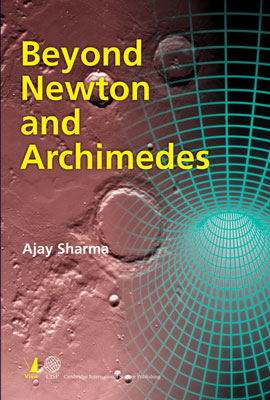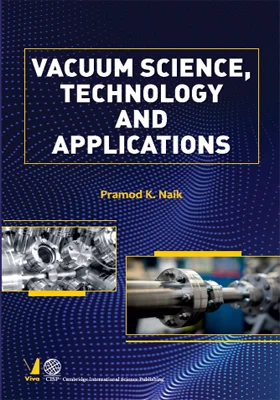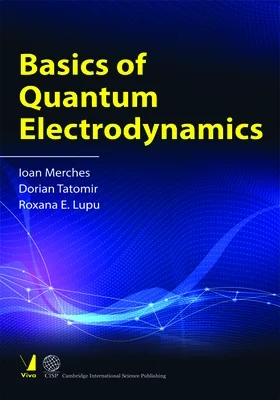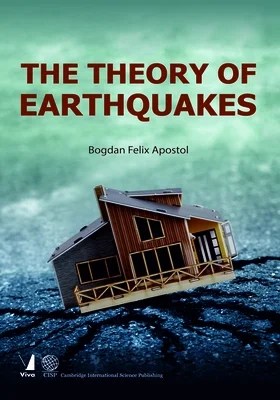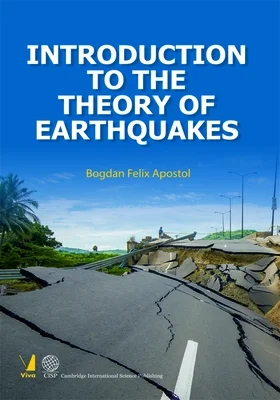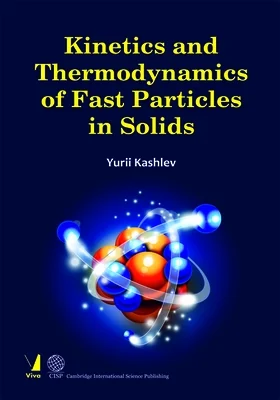Beyond Newton and Archimedes
Beyond Newton and Archimedes
₹1,345.50 ₹1,495.00 Save: ₹149.50 (10%)
Go to cartISBN: 9788130926742
Bind: Hardbound
Year: 2014
Pages: 336
Size: 152 x 228 mm
Publisher: Cambridge International Science Publishing
Published in India by: Viva Books
Exclusive Distributors: Viva Books
Sales Territory: India, Nepal, Pakistan, Bangladesh, Sri Lanka
Description:
Taking into account the current experimental and technological accomplishments and theoretical methods, this book stresses the basic laws of science, i.e. Archimedes principle, Newtons' laws, need to be generalized. Generalization of the laws and principle are inevitable. Newton did not discover the Second Law of Motion F = ma. This is clear from the critical study of the Principia. The 2265 years old Archimedes principle has limitations that it does not take into account the shape of the body and the viscosity of the medium under consideration. The Archimedes principle predicts that the volume of the medium filling a floating balloon/vessel becomes indeterminate, i.e. 0/0. These are serious limitations of the principle. Archimedes principle is generalized (up thrust is proportional weight of fluid displaced), the generalized form takes all elusive factors in account. In the existing literature there is no quantitative theory which may explain the phenomena of rising, falling and floating bodies quantitatively. Such a theory is described in the book for first time.
Further background of Newton's laws of motion is discussed since days of Aristotle (384-322BC), Philiponnus (490-570), Buridan (1300-1358) and Galileo (1564-1642). The First Law of Motion is applicable under ideal conditions when resistive forces are not present in the system of the body and the medium. The Second Law of Motion is just the mathematical form of Newton's First Law of Motion. Newton's Third Law of Motion has been restated as "to every action there is opposite reaction but it may or may not be equal."
In this book:
- 2360 Years Old Aristotle's Assertion Revalidated by Stokes Law
- Construction of Water, Glycerine and Ethyl Alcohol Barometers
- Archimedes Principle: The Oldest Established Law
- The Generalized Form of Archimedes Principle
- Prediction of Indeterminate Form Of Volume From Archimedes Principle
- Is Stokes Law Applicable for Rising Bodies
- Limitation of Existing Theories and an Alternate Theory of Rising, Falling and Floating Bodies
- Route to Newton's Laws of Motion
- Experimental Confirmations of Equations of Conservation Laws in Elastic Collisions
- One-Dimensional Elastic Collisions and Newton's Third Law of Motion
Newton's second law of motion, F = ma was not derived by Newton. It is clear from the Principia. However, the first and third laws, as we teach now, were given by Newton.
The mathematical equations, based upon the Archimedes principle, became feasible after 1937 years of enunciation of the principle. How did scientists take the principle for granted for so many years without equations? Newton defined g (acceleration due to gravity) in 1687.
When mathematically analyzed, the 2263 years old Archimedes principle predicts that, under certain feasible conditions, the volume of the medium filling a balloon becomes undefined, i.e. V = 0/0 (meaningless).
When the Archimedes principle is generalized, then the exact volume, i.e. V = V is obtained.
Further, the Archimedes principle does not account for the shape of the body, the viscosity of the medium, etc., these factors can be taken into account by generalized principle. The generalization can be experimentally confirmed by sensitive experiments.
R. Piazza reported anomalous observations to the Archimedes principle in sensitive experiments, i.e. heavy particles of gold floated over the surface of a lighter medium.
Aristotle's assertion about falling bodies (i.e. a heavier body falls more quickly than a lighter one) is even now true under the conditions. Stokes law holds good (in fluids).
In the existing literature, there is no theory which explains the distance travelled (fallen or arisen) by bodies of different magnitudes (1 mgm or less and 10 kg or more) of different shapes (spherical or distorted) in time t (say 1s) in various fluids. Consequently a generalized theory of rising, falling and floating bodies is formulated for the first time.
The Italian scientist Evangelista Torricelli constructed a mercury barometer in 1644, but even after 369 years no water barometer has been constructed. It would require a tube 10.3 m long and future experiments may be revolutionary in many respects.
Target audience:
Students and academicians of physics, researchers, scientists.
Contents:
Chapter 1: 2360 Years Old Aristotle's Assertion Revalidated by Stokes Law • First Glimpse 1 • Introductory Mathematical Background of Aristotle's Assertion • Aristotle (384? 322BC) and his assertion • Violent motion or forced motion • Aristotle's assertion about falling bodies • In air • In water • Galileo's contradiction of Aristotle's assertion • Mathematical basis of Galileo's conclusions 8 • Distance travelled when the body moves with uniform velocity • Distance travelled when the body moves with uniform acceleration • Galileo's experimental demonstration • In vacuum • Merits and demerits of Aristotle's assertion and Galileo's demonstration • Mathematical equations based upon Archimedes principle, and falling bodies • Mathematical equations based on Archimedes principle • Can resultant weight be a measure of tendency to fall? • Re-validation of Aristotle's assertion by Stokes law • Stokes law • Constant velocity of small spheres • Calculation of terminal velocity or constant depending upon Stokes law • Revalidation of Aristotle's assertion • Motion of spheres of different radii (masses) • Confirmation of Stokes law • Frequently asked questions • References
Chapter 2: Construction of Water, Glycerine and Ethyl Alcohol Barometers • First glimpse • Atmospheric pressure • Glass tumbler experiment • The Magdeburg hemispheres • Some significant terms • First barometer constructed in 1644 • Measurement of pressure • Derivation of the equation of pressure or Pascal's law in presence of gravity • Role of surface tension, angle of contact and viscosity in measurement • Why the water barometer has not been constructed since 1644 • Formation of glycerine, water and ethyl alcohol barometers • Two methods to measure acceleration due to gravity • Newton's law of gravitation • Gravitation and weight • Variation caused by the acceleration due to gravity with altitude (height) • Comparison of two values of acceleration due to gravity • Calculations of heights of various liquid columns • Frequently asked questions
Chapter 3: Archimedes Principle: The Oldest Established Law • First glimpse • Archimedes • Origin of Archimedes principle • What was the unit of volume and weight at the time of Archimedes? • Relevant terms • Measurement of the density of body by the simplest and possibly oldest method • Measurement of relative density • Derivations of the Archimedes principle or Equation for the Archimedes principle (U = VDg) from its definition using the law of gravitation • Equation for the Archimedes principle (U = VDg) from pressure P = DgH • Numerical calculations of upthrust • Measurement of density by the method independent of the Archimedes principle • Laws of flotation • Exception to Archimedes principle or Factors not taken into account by the Archimedes principle • Frequently asked questions • References
Chapter 4: The Generalized Form of Archimedes Principle • First glimpse • Introduction • Completely submerged floating balloons • The mathematical equation for the mass which the balloon supports while floating • Flotation of a completely submerged balloon or vessel or artifact in water • Similar equation in existing literature • Experimental confirmation of theoretical results • Experimental description • Experimental verification of Eq.(4.) • Possible reasons for deviations from Archimedes principle • Effect of density of additional mass attached • Possibility of significant deviations • The generalized form of the principle • 2264 years old Archimedes principle generalized • Generalized Archimedes principle and the completely submerged floating balloon or vessel or artifact • Recent developments • Frequently asked questions • References
Chapter 5: Prediction of Indeterminate Form Of Volume From Archimedes Principle • First Glimpse • Decrease in the weight of the body in a fluid (liquid or gas) • The equations in terms of acceleration due to gravity • General conditions of flotation • Equations for completely submerged floating balloons • Air-filled balloon floating in water • Calculations of variables, v, Dm, Dw and V based upon the original form of the Archimedes principle • Division by zero smoothly follows from equations based on the Archimedes principle • Numerical calculations of volume V • Generalization of the Archimedes principle • Mathematical derivation of the Archimedes principle is only true for symmetric shaped bodies. It is not true for body of any shape • Condition of derivation of upward thrust • Physical significance of the coefficient of proportionality • Floating bodies • Independent experimental support to above experiments • How the shape of the body is important in falling bodies • Accelerated motion • Downward motion of bodies when the Stokes law is not applicable • Frequently asked questions • References
Chapter 6: Is Stokes Law Applicable for Rising Bodies? • First glimpse • Viscosity • Newton's equation of viscosity • Stokes law • Derivation of F = 6p?rv • Determination of the magnitude of k • coefficient of proportionality • Constant velocity attained by a falling body • The three forces compete • Is Stokes law applicable to rising bodies? • Measurement of viscosity of fluids by the method of rising bodies • Mathematical background • A suitable body rising upward in a viscous medium • Measurement of viscosity of fluids by equation (6.31) • Frequently asked questions References
Chapter 7: Limitation of Existing Theories and an Alternate Theory of Rising, Falling and Floating Bodies • First glimpse • Relevant terms • Archimedes? principle • The Archimedes principle in rising, falling and floating bodies • Qualitative explanation • Quantitative explanation • Importance of resultant weight • The resultant acceleration follows from the resultant weight • In vacuum • Archimedes? Principle and quantitative displacements of bodies • Distance travelled by falling bodies in fluids • Motion of bodies in mercury ( 13600kg/m3) • Experiments in glycerine (12600 kg/m3) • Experiments in mercury ( 13600kg/m3) • Distance travelled by rising bodies in fluids • The Archimedes principle and floating bodies • First stage observations: Floating balloons in water • Factors not taken in account by the Archimedes principle • Stokes law • Constant velocity attained by the falling body • Subtle range of Stokes law • Drag force • Developments after the Stokes law • Rigorous requirement of generalized theory • Background of a generalized or complete theory • Force exerted by fluid or medium Fm • Understanding effect of xm • Understanding effect of ym .0. Force exerted by the body (Fb) on the medium • Understanding the effect of xb • Understanding the effect of yb • Units and dimensions of ab and am .? Comparative study of Fm and Fb or hidden ratio • Explanation for motion of bodies • Standard conditions on the basis of alternate theory • The displacement in terms of the falling factor and the rising factor • Comparison of equations giving distances (upward and downward) • The floating bodies • The falling bodies and generalized theory • Standard conditions • The rising bodies and alternate theory • The floating bodies and the generalized theory • Conclusions • References
Chapter 8: Route to Newton's Laws of Motion • First glimpse • Aristotle and his dynamics • The theory of cause and effect • Motion of a projectile • Johannas Philoponus's theory of impetus • Papal decree and theory of impetus • Jean Buridan coined impetus • Galileo's law of inertia • Demonstration of Galileo's law of inertia • Linear momentum • Force • Newton's three laws of motion • Three laws of motion in Latin and English • First law of motion • Explanation by Newton of the first law of motion in the Principia • Second law of motion • Mathematical expression of Newton's second law of motion • Second law of motion as taught in textbooks is not given by Newton • Definition II in the Principia Book 1 • Newton discovered the calculus and did not use derivative of time, i.e. d/dt • Who defined Newton's second of motion in the form F = kma? • Are p = mv and F = ma analogous • ? F = ma does not follow from Newton's second law of motion • The value of the coefficient of proportionality K in F = Kma is determined assuming values of all variables are equal to unity • Coefficient of proportionality G in law of gravitation • Arbitrary method of determination of G is not justified • The value of the coefficient of proportionality • can be measured by this method • Why special status for F = Kma? • Newton's Principia and the third law of motion • Action and reaction are not always equal and opposite • Following example is neglected • Second law of motion is the real law of motion • Prediction of undefined inertial mass from equation
F= ma or m= F/a • Inertial mass under the conditions when Newton's second law of motion reduces to first law of motion (a=0, u= v, F= 0) • Core area of applicability of Newton's first and second laws • The facts Newton did not explain • Two types of systems • Frequently asked questions • References
Chapter 9: Experimental confirmations of equations of conservation laws in elastic collisions • First glimpse • Laws of conservation in nature • Linear momentum • Principle of conservation of linear momentum • Questions to be pondered upon • Work • Units and dimensions of work • Kinetic Energy • Newton's first law of motion or the law of conservation of velocity • Newton's first law of motion or the law of conservation of velocity • Newton's first law of motion, law of conservation of momentum and law of conservation of kinetic energy • Collisions • Elastic collision • Inelastic collisions • Perfectly inelastic collisions • Coefficient of restitution or coefficient of resilience • Final velocities of bodies v1 and v2? The values of v1 and v2 under special conditions • When two bodies are of equal masses • Masses of bodies are different and body B (target) is at rest, u2=0 • When mass of body B is negligible compared to that of body A (M2 << M1) • Experimental confirmation of the equation based upon conservatism laws • The general values of u and v • When two bodies are of equal masses, M1= M2= M • When target is at rest (u2=0) • Large difference in velocities of body A and body B • Concluding remarks • Experimental aspects • Frequently asked questions
Chapter 10: One-dimensional elastic collisions and Newton's third law of motion • First glimpse • The third law of motion as in the Principia • Newton's original explanation to third law of motion • Examples which illustrate the law qualitatively • The following example is neglected • Elastic collision in one dimension: mathematical equations • When body B is at rest (u2=0) • Mass of body B is very-2 large compared to mass of body A • Generalised form of the third law of motion • Frequently asked questions • References • Index
